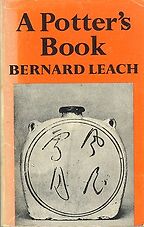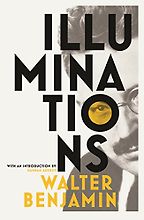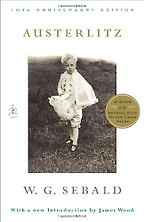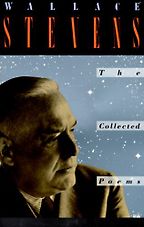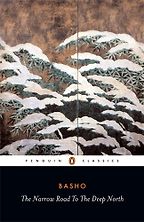Your career has two strands to it, as a writer and as a ceramic artist, and both seem to be intertwined. You wanted to be a potter from an early age, yet you opted to study English at Cambridge University. You have also said that a lot of literature goes into your ceramics. Can you tell us more about the relationship between the two?
I’m one person. So the things I’m passionate about – either what I make or what I write, what I look at or what I read – are of course incredibly closely entwined. It seems to me perverse to be surprised that you can be a person who both makes something and writes something. The reality is that the things I make using porcelain come very much out of reading and thinking about ideas and words. That’s how I work.
“It’s perverse to be surprised that you can be a person who both makes and writes.”
If you look at my installations, the way things are grouped together is often in terms of phrases. The phrases happen to be groups of porcelain vessels, but they are groupings that work through groups and pauses, and then more groups or single objects. There’s often a musical or textural link in the way in which things get put together. My sense of objects and my sense of words are very closely linked. Conversely, when I’m writing I have a very physical sense of language – the physical presence of language. That sounds completely and unbearably pretentious, but it is actually true for me.
You have said that the fact that you only work with porcelain is a link between the traditional craft of Chinese pottery and European culture. Is that right?
Absolutely. A lot of my work with porcelain is a bridge between East and West. Porcelain was the great motor of the Silk Road – it made trade happen between the Orient and the West. Porcelain is completely fascinating for me. Similarly, I have always been interested in Japanese and Chinese poetry – that has also been completely core for me.
Putting writing to one side, how would you describe yourself? Are you a potter, a ceramic artist, a ceramicist? Pots are generally brown and have a function. You produce works of art.
Yes, it is art. It is completely art. What I do is make porcelain vessels which – for the first 25 years of my making life – did have a functionality to them. That is no longer true. They are much more abstracted now. They are still vessels, but they don’t they get used except as part of my installations. So, what am I? I don’t know anymore. Am I potter? Absolutely: I make pots. I’m an artist, and have exhibited in smart art galleries around the world. I’m a sculptor. I work with architects. So I’m lots of different things to different people.
In general, does the art world view ceramics on the same level as painting and sculpture, or as a poor relation?
It used to be [a poor relation]. It isn’t any longer. If you asked me 20 years ago I would have said it was. But the reality internationally is that there are many people who use clay in different ways who are regarded as serious artists. Of course, there are people who police the boundaries and say: If it’s made of clay, it can’t be art. But then those are the kind of people who thought that photography was not art. Go into any exhibition in any museum in the world and it’s full of people who use photography and are artists. So there will always be some people sniping away, but they are not the people who have eyes.
Let’s turn to your first book choice now. Who was Bernard Leach?
Bernard Leach was the most significant 20th century potter. He was the person who articulated why pottery mattered. He did it through his evocation of the value of Eastern pottery, and his advocacy and evangelism for the handmade pot. He was English but grew up in Japan, and he “got” Japanese pottery earlier than anyone else. He came back to St Ives in Cornwall [in Britain] in 1919 and set up a pottery studio. He can be regarded as the father of the studio pottery movement.
Will you tell us why you chose this book?
As a young man, I wrote a debunking book about Leach for the Tate gallery. It was a critique of the myth of Leach more than a critique of Leach himself. But A Potter’s Book remains incredibly important because of its ability to allow any reader who picks it up to understand the excitement and energy of the making of pots. You pick it up, and you get it. He articulates with great energy why pots are interesting things to have in your hand, and to make. That’s a pretty extraordinary thing to be able to do. It works as a manifesto and as a handbook simultaneously, which is remarkable. And the book itself remains remarkable – it’s over 70 years since it was first published, but it still has that buzz to it.
Is it a practical guide?
It does act as a practical guide. It tells you what to do with clay, what a glaze is and how to build a kiln. But it’s also a manual on aesthetics. It has his philosophy of why pots matter. And it has a kind of canon of his favourite ceramic objects scattered through it. You can pick it up and “get” Leach – why he makes things, how he makes them, what to look at and why they’re worth looking at. So it’s both a philosophical guide and a manual all in one.
Your critique of Leach challenged his standing as the great interlocutor between Japan, and the East, and the West. You pointed out that he didn’t speak Japanese and worked only with Westernised Japanese potters.
Absolutely. He was an Edwardian gentleman at large in Japan. There’s nothing wrong with that at all, but throughout his life he gave the impression that he’d seen truly into the heart of Japan and the Oriental man, and come back to the West bearing the gift of knowledge of the Orient. That was absolutely bogus. I tried to write something which said why he mattered, but also that he was a big enough man and a significant enough figure in the art world to bear a bit of truth telling as well.
Why did you choose Walter Benjamin’s collection of essays?
I first read them when I was studying English, and they completely blew me away. The reason that they mattered so much to me then – and still matter to me now – is that I’ve never read philosophy that was so personal, and completely engaged with the experience of thinking and looking at people and at art. The essays that matter most to me are the one on [collector and historian] Edward Fuchs, and another called “Unpacking my Library” where he records the experience of unpacking crates of books that have been put away for several years. As he unpacks he talks about where he bought them, the experience of having them and what they feel like in the hand. So it’s a meditation on history, a meditation on philosophy, a meditation on collecting and an autobiography as well. It was the idea that you could write in an engaged way about diverse things that has remained incredibly important to me.
Benjamin was also a Marxist. What other subject matters does he touch upon in this collection?
Yes, he was a Jewish Marxist philosopher. But it’s difficult to think of a less dry Marxist. He is completely besotted by the world of things and commodities – how things get made, how they get turned into art, and how they get traded, collected and dispersed. He’s very good on all those different things.
He can also write about cities beautifully. Another of his books, Passagenwerk [The Arcades Project], is the greatest book about Paris in the 19th century that there is. But he’s also completely brilliant on toys, on photographs and on books. What I absolutely love about him is the feeling of someone who cares about the world of things, and how things work with people – but he’s also a philosopher, which is very unusual.
In his essay “The Work of Art in the Age of Mechanical Reproduction” Benjamin talks about works of art having an “aura”, and how that is lost when art is produced using mechanical production techniques. Today there are artists such as Damien Hirst whose works are produced in what are essentially small factories. Do you think art loses its aura if produced in this way?
My take on it is that there is still something extraordinary about art which comes out of an encounter between a person and a material. The further you get away from that, the more you get into something which is commodified and reduced to a series of other people’s interactions with it. There is something extraordinary which is lost. But here I am. I’m sitting next to my [potter’s] wheel while I’m talking to you.
So you’re not going to be outsourcing your production?
No. I’ve got fantastic assistants working for me. But everything here, I make. People help me, but that’s different from the other way of making contemporary art.
Tell us more about your third pick.
This is an incredibly beautiful book. Sebald was a really interesting German writer, and I think this is his masterpiece. He’s interesting because he blows away genre. You read his books and you’re not sure at all whether it is fiction, non-fiction, travelogue, memoir, art history or urbanism. But you are absolutely gripped by its extraordinary melancholy and powerful prose. It completely grips you.
Austerlitz incorporates one man’s journey across Europe and his encounters with people on the way. But you know what: I cannot sum up Austerlitz. I refuse to sum it up. It refuses to be summarised. What I will say about it is that I read it in the English translation, and then I read it in German, and I was absolutely amazed because it has the feeling even in German of being a book in translation. It has a cadence to it which is really intriguing, and which is something to do with being a book about Europe. So it doesn’t fit into a genre, and doesn’t really fit into any particular language.
The English translation does contain a sentence that is nine pages long. Is it a challenging read?
It isn’t at all challenging. I think it’s a really approachable book. It’s a book that is ambitious but not pretentious.
It certainly gives the reader a sense of the devastation wrought by the Nazis on the Jews of Prague. I presume you read it before you wrote The Hare with Amber Eyes. Did it influence you?
What Sebald did for me was to say that a particular voice was allowed. That voice was very internal, very quiet and credible across a whole piece of writing. I think I learnt that entirely from reading Sebald.
Your next choice is the American modernist poet Wallace Stevens.
I love American poetry even more than contemporary English poetry. I absolutely loved Stevens when I first read him. There’s something at the heart of his poems which is very abstract. He’s dealing with issues about what’s real and what’s imagined, and how you reconstruct the world endlessly through your imagination. They are very beautiful poems and poems that you can reread endlessly, because they are really about imagination and being in the world. They’re also odd poems. The early ones are quite florid, seemingly over the top, until you realise that he’s using language in an incredibly precise way. If I had to pick a book of poems for my desert island, I would probably end up with Wallace Stevens.
In terms of subject matter, is there a particular theme he prefers to write about?
No there isn’t, except to say that they are often poems which need to be read aloud. It’s very rare to find people who will admit to reading them aloud, because they look so strange on the page. But once you do read them aloud, they become much clearer. There is also the most beautiful poem about a pot – about placing a pot – called “Anecdote of the Jar”. So how can I not love Wallace Stevens? He wrote the best poem about a pot in any language ever.
Have you ever written poetry?
Not for a very long time.
Is it something you might do in the future?
I haven’t got a third career up my sleeve as a poet.
That would really be too greedy, wouldn’t it.
It would be hopeless.
Let’s move onto your final book. Who was Matsuo Basho?
He was a 17th century haiku poet, and this is the record of his journey through the Japanese countryside. He is so fed up, so cold and so beset by fleas, noisy travellers, the rain and the heaviness of the journey. What he does is simply record his life through haiku.
Can you remind us what haiku are?
A haiku is a tiny poem. It looks like a fragment of a poem but in fact it’s complete. It has a certain number of syllables in it, so it’s a very formalised structure. It captures a single image or a single perception or a single moment of the world – and they are very beautiful. They slow you down. It’s not an attempt to tell the world in some kind of epic form, it’s just catching sight of something beautiful or something odd, like the expression of a fellow traveller, or a cheering glass of sake at a particular moment. It has that sense of encounter with something very particular.
Get the weekly Five Books newsletter
This book is a very beautiful travelogue. I love it because it rings true with how you travel – that feeling of fed-upness, coupled with moments of complete surprise and delight. I have travelled a lot in Japan, and it’s difficult for me to travel there without Basho near me.
Do haiku translate well into English?
No, not particularly if I’m honest. You don’t get the density of the language, because when you read haiku [in Japanese] you also see the Japanese characters – which are dense with visual meaning as well as with literal meaning. But it’s still worth it. You don’t have to learn Japanese to enjoy Basho. They are wonderful poems.
Five Books aims to keep its book recommendations and interviews up to date. If you are the interviewee and would like to update your choice of books (or even just what you say about them) please email us at [email protected]
Five Books interviews are expensive to produce. If you've enjoyed this interview, please support us by donating a small amount.
